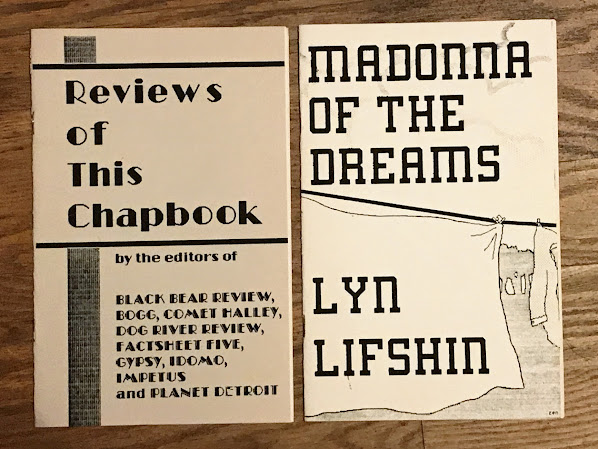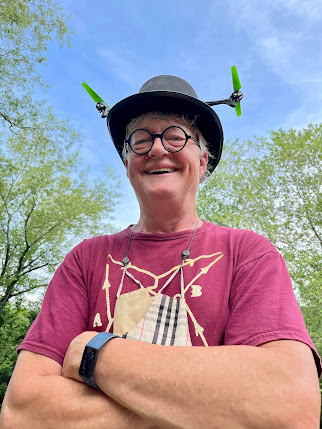There are those for whom scholarship still matters -–that ancient practice of study and dialogue with a text, outside the temporal constraints of our mortal transience. Sometimes, this scholarship might take another form than the philosophical treatise; sometimes this scholarship, this dialogue with a text, will result in a variety of other written genres, sometimes even poetry. In the instance of Fata Morgana (Unlikely Books, 2021), the opening section is a poem in response to another poet, Jack Spicer; which is, in turn, also in dialogue with the process by which the poem was written. While experiments in spacing, unreliable narration and odd trim size are not new to literary endeavors, Fata Morgana makes ample use of these techniques to try and prompt the reader to consider multiple ways of reading while reading; there’s no definitive approach to this work beyond the traditional format of opening the book and turning pages.
The book as an entity is an object of 8 by 8 inches, which does not fit tidily on the shelf, and thus demands consideration of its physical nature: a perfect-bound volume of less than 80 pages. Within these pages are graphic devices, simple drawings, which both divide sections within the book, as well as sections within poems. While the paper for the book is traditional enough in trade volumes—standard weight, matt cover, low gloss for easier reading of the text—the physical appearance of the text, in two columns, makes the decision for the extra wide pages a logical, editorial choice.
The title poem is a seven-page section in the volume, presented in two columns with an underscore line creating a graphic connection from the end of the left stanza to the italicized column on the right. This presents the reader with the decision of how to read the poem, to follow the graphic right and left and right again, to read the left column through before that of the right, or to beg a scholarly patience from the reader by reading the poem multiple times. In seeking from the text itself how it wants to be read, the reader discovers the dialogue between, apparently, the two minds of the author: the left column presenting a more traditional poem, the right presenting a mind considering aspects of consideration external to the poem. In the case of this title poem, the external consideration is a meditation on architecture, which “is about asking questions concerning the/meaning of human ha-/bitation”(35). While the narrative of the entire poem is the sort of curious disaster found in local news, Chace uses overt allusion to clearly demark the poem’s genre as also being that of a ghost story:q“ if he is a Banquo come/back to tell them[…]that those/ he returns to instruct or[…]murder will not stay murdered/ or instructed, unlike/a Banuo who returns but/cannot be unmur/dered”(37-38). Chace’s meditation on the ghost here returns to the external consideration of philosophy and architecture, as if the mortal lives that appear in the poem are more dust to him than the ideas their lives might represent.
While the book presents itself as a work of poetry, it is also an obvious philosophical work about the distance from life events that critical thought requires. Ironically, the last section of this volume contains 14 poems written during the first flush of the pandemic. In these poems, the dialogue of the scholarly mind in the right column begins to break down into a counterpoint of other physical observations, into comments about music, and finally into auditory verbs. The poems’ narrative scaffolding seems to retreat from a wider world view into an observation about sanitation workers.
Yet, still the sense of dual thought, of observing and thinking about what is observed, is consistent through this volume. Whether or not such meditations are of value, or whether or not the pursuit of a critical and philosophical endeavor is mere mirage is a larger cultural issue of our time. For those for whom such intellectual endeavors are still crucial, this work posits a number of worthy considerations.
Fata Morgana is available on Amazon.
Su Zi is a writer, poet and essayist who produces a handmade chapbook series called Red Mare. She has been a contributor to GAS from back when it was called Gypsy Art Show, more than a decade ago.






















